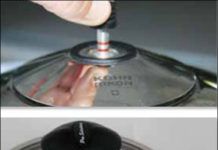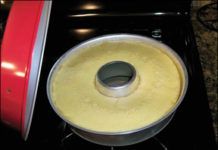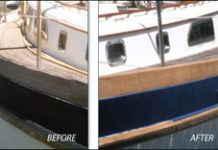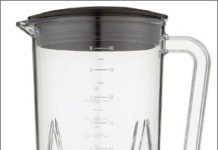Design For: A Mug Rack
The modest mug, basic in shape and function, finds its way aboard all but the most elegant or the most rudimentary of vessels, because it is so useful. Equally at ease with soup or stew, coffee, tea, or chocolate, bread sticks, spoons, or even flowers, it serves faithfully in rough water and smooth. While almost universally carried aboard boats, the stowage of mugs varies as much as their uses. On some boats they rattle about in the galley sink, while in others they may be neatly nested in a drawer, hung from hooks, or (best of all) resting in proper racks.
Keeping You Cool: Improving Your Icebox
Galleys on American production sailboats have come a long way in the last 20 years. We particularly remember one 40' cruiser-racer by one of the country’s most famous designers, whose galley consisted of a two burner countertop alcohol stove, a miniature sink, a few lockers, and an icebox: if you put 100 pounds of ice in it, it managed to keep small quantities of food at slightly below outside temperature for a few days at a time. Today, thank God, you’d probably find a better galley on any 30-footer.
The Complete Propane Appliance System
Of course, everything on a boat is a compromise, and so it is with propane. It has two nasty traits that must be dealt with: Propane is heavier than air, which allows the gas to collect in the bilge in the event of a leak; and propane is explosive when it collects in such places.
Mailport: January 2011
Letters to Practical Sailor, January 2011. This month's letters cover subjects such as: Sailing non-profits, wind gens, pressure cookers, wood finish and mildew remover.
Pressure Cookers Test
Most galley cooks argue that the pressure cooker is the most versatile, most valuable pot on a boat. Pressure cooking is faster than regular cooking, better preserves flavors and nutrients, saves cooking fuel and water, and having a lid that is locked on is a bonus. Practical Sailor tested four 4- and 6-quart pressure cookers from three manufacturers: Presto, Kuhn Rikon, and Fagor / Pro-Selections Inc. Testers assembled and used the cookers according to instructions, then cooked a pound of quartered potatoes under pressure in each pot. Finally, we cooked a selected recipe from the recipe book provided with each pot to gauge the quality of the recipes and the cookers performance in real-world use. In our search for the best pressure cooker for the galley, we also considered each cookers construction, ergonomics, user-friendliness, clarity of instructions, price, warranty, and the accessibility of customer help and spare parts.
Mailport: November 2010
Letters to Practical Sailor from our readers. November 2010's topics include cleaning products, sail hardware, galley stoves and anti-fouling paints.
Stove-top Baking: How Sweet It Is
Theres nothing like the smell of fresh-baked treats wafting from the galley, and thanks to the Omnia Oven, the crew of any boat with a cooktop, grill, or hotplate can enjoy fresh baked goods onboard. The Omnia Oven, a new take on the old Dutch oven, can bake anything from cookies to meatloaf without the need for a conventional oven.
Mailport: July 2010
Letters to the editors of Practical Sailor in July 2010 include questions and comments about mildew, galley blenders, teak cleaners, online captains courses and personal hydration.
Tailgating Afloat
Always on the lookout for gizmos that bring aboard some small luxury and help reduce the "roughing it" factor too often associated with cruising, our testers immediately recognized the potential of the DC-powered Tailgater Blender by Waring Products of Connecticut. A classic Waring blender with a heavy-duty chrome-plated metal base, the Tailgater is a full-sized blender with the look and heft of a household unit. Features include a fuse-protected 15-foot cord that plugs into any standard 12-volt cigarette lighter outlet, a removable stainless-steel blade assembly for easy cleaning, a large 48-ounce, shatter-resistant plastic carafe, and a handy "shot glass" measuring cup built into the lid.
Mailport: June 2010
The June 2010 issue featured letters on subjects such as: spiders, addition of color to handheld electronics, DIY boatyard recommendation and propane fridges.



















































